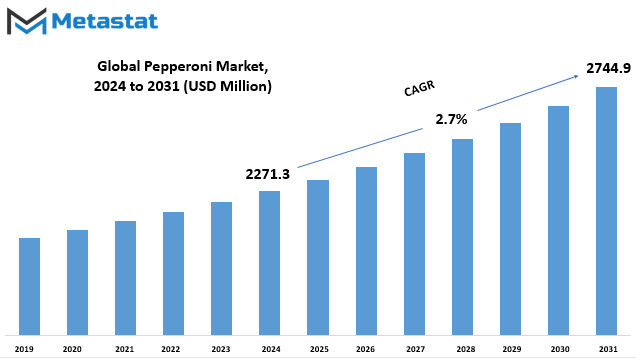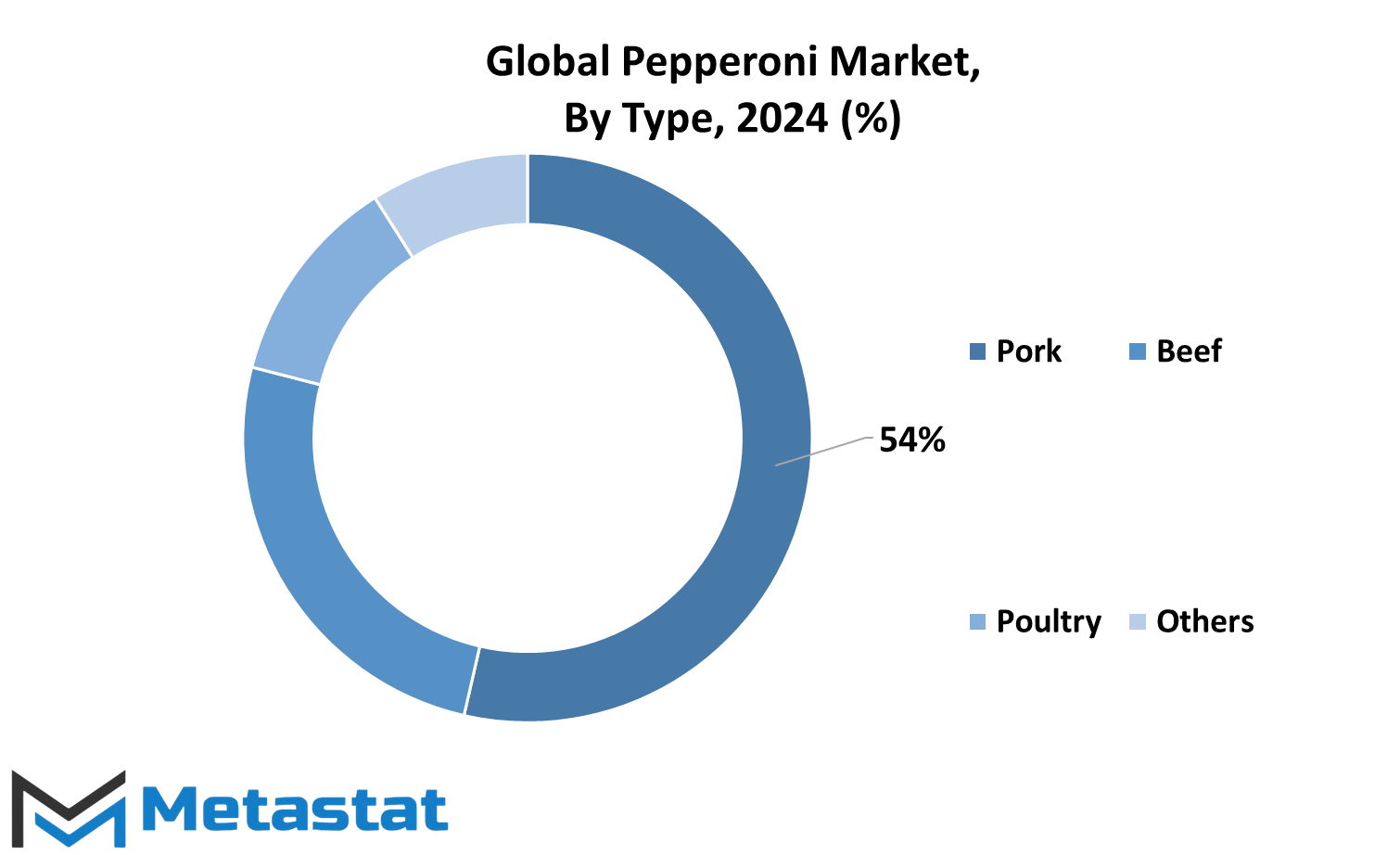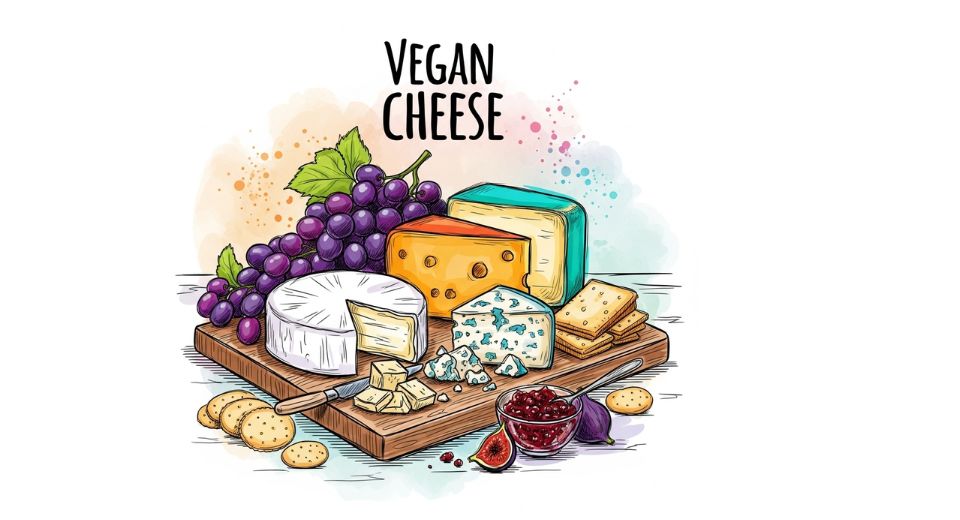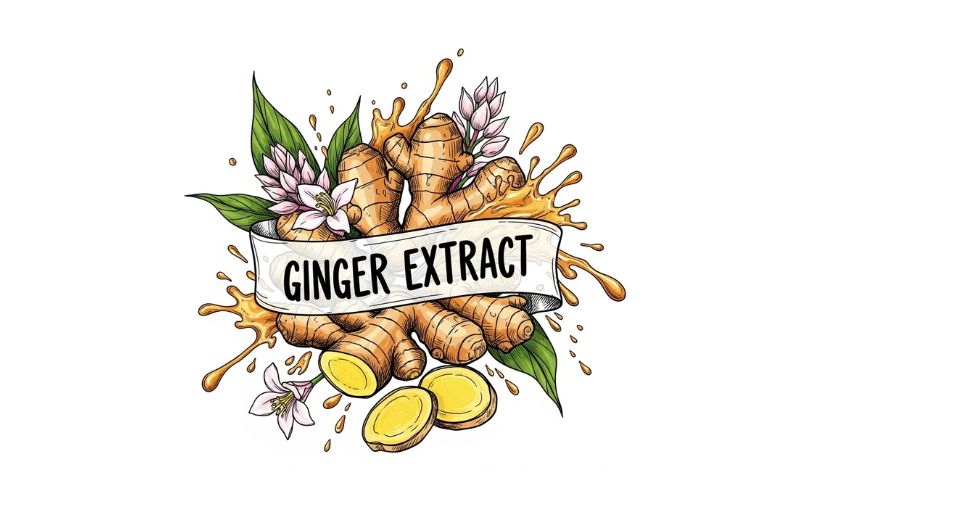MARKET OVERVIEW
The Global Pepperoni Market plays a significant role in the culinary landscape worldwide. This market encompasses a diverse range of products and exhibits a remarkable tapestry of flavors that cater to varying consumer preferences. Pepperoni, a type of cured sausage, is a key player in this market, renowned for its distinctive spicy and smoky taste.
Originating from Italy but now a staple in various international cuisines, pepperoni has transcended its cultural boundaries to become a versatile ingredient. Its widespread popularity has led to the development of a robust market characterized by innovation and a constant quest for quality. Producers within the Global Pepperoni Market continuously strive to meet the evolving demands of consumers, pushing the boundaries of flavor profiles and product offerings.
One of the driving factors behind the success of the Global Pepperoni Market is its adaptability to diverse culinary applications. From classic pizza toppings to gourmet charcuterie boards, pepperoni’s versatility knows no bounds. The market is marked by a multitude of players, both small artisanal producers and large-scale manufacturers, each contributing to the rich tapestry of pepperoni offerings available to consumers.
Moreover, the Global Pepperoni Market is not only influenced by taste preferences but also by evolving consumer trends, such as the increasing demand for healthier and premium options. As health-conscious consumers seek products with cleaner ingredient profiles, market players respond with innovative solutions, leading to the emergence of organic and nitrate-free pepperoni variants.
The competitive landscape of the Global Pepperoni Market is shaped by factors such as quality, authenticity, and sustainability. Artisanal producers often highlight traditional curing methods, while larger manufacturers focus on scalability and consistency. Sustainability practices, including responsible sourcing of ingredients, further contribute to shaping the market dynamics.
The Global Pepperoni Market is a vibrant and ever-expanding arena where culinary traditions, consumer preferences, and innovation converge. As the demand for diverse and high-quality pepperoni products continues to rise, the market remains a dynamic space, providing opportunities for both established players and newcomers to contribute to the global culinary experience.
Global Pepperoni market is estimated to reach $2744.9 Million by 2031; growing at a CAGR of 2.7% from 2024 to 2031.

GROWTH FACTORS
The pepperoni market has experienced notable growth due to various factors contributing to its expansion. One key driver is the increasing demand for convenience in food consumption. In today's fast-paced lifestyle, people are drawn to quick and easy meal options, and pepperoni fits the bill. Its ready-to-use nature makes it a preferred choice for many, as it eliminates the need for extensive preparation time.
Moreover, the versatility of pepperoni plays a pivotal role in its market growth. Beyond being a pizza topping, it has found its way into various dishes, from sandwiches to salads, adding a distinctive flavor that appeals to a broad audience. This adaptability has broadened the market reach of pepperoni, making it a sought-after ingredient for diverse culinary applications.
The growing popularity of international cuisines has also fueled the demand for pepperoni. As consumers explore and embrace different flavors, the distinct taste of pepperoni has become a favorite in various global dishes. This cross-cultural acceptance has not only boosted domestic consumption but has also opened opportunities for the export of pepperoni to new markets.
Additionally, the influence of the foodservice industry has been instrumental in driving the pepperoni market. Restaurants, cafes, and other food establishments consistently incorporate pepperoni into their menus, catering to consumer preferences and driving sales. This collaboration between the foodservice sector and the pepperoni market has created a mutually beneficial relationship, sustaining the growth momentum.
The rising awareness of health-conscious choices has led to the development of healthier versions of pepperoni, addressing concerns related to sodium content and processing methods. This adaptation to changing consumer preferences has played a crucial role in maintaining and expanding the consumer base.
The growth of the pepperoni market can be attributed to the demand for convenient food options, the versatility of the product, its integration into international cuisines, the influence of the foodservice industry, and the adaptation to health-conscious trends. These factors collectively contribute to the sustained expansion of the pepperoni market, making it a significant player in the food industry.
MARKET SEGMENTATION
By Type
The Pepperoni Market is divided by type, with a closer look at various categories within this classification. The segmentation includes Pork, Beef, Poultry, and Others.
Pork stands out as a significant player in the Pepperoni Market. The usage of pork as a primary ingredient contributes to the distinct flavor and texture that pepperoni enthusiasts appreciate. The savory and slightly spicy taste associated with pork-based pepperoni has made it a classic choice for many consumers.
Moving on, Beef is another prominent category within the market. Beef-based pepperoni provides a distinct taste compared to its pork counterpart. The robust flavor of beef adds a different dimension to the overall profile of the pepperoni, appealing to those with a preference for red meat.
Poultry is also a noteworthy segment in the Pepperoni Market. For individuals seeking a lighter alternative, poultry-based pepperoni offers a unique taste experience. The use of poultry in pepperoni production caters to those who may have dietary preferences or restrictions while still enjoying this popular pizza topping.
The category labeled as Others encompasses a variety of alternative ingredients. This segment may include a combination of meats or innovative plant-based options. The inclusion of diverse ingredients under the Others category reflects the evolving preferences and dietary choices of consumers in the pepperoni market.
The Pepperoni Market’s segmentation by type sheds light on the diverse choices available to consumers. From the traditional and savory pork to the robust beef, the lighter poultry, and the innovative options within the Others category, this segmentation provides a comprehensive understanding of the varied landscape of pepperoni offerings in the market.

By Application
The pepperoni market is segmented based on its applications, mainly into three categories: Pizza, Meals, and Ready-to-Eat products. Each of these applications is crucial in determining the market's demand and consumption patterns.
Pizza, being a popular and widely consumed food item, stands as a significant contributor to the pepperoni market. The savory and flavorful nature of pepperoni makes it a preferred topping for pizzas, enhancing the overall taste and appeal. As pizza continues to be a favorite choice for many consumers, the demand for pepperoni as a key ingredient remains consistently high.
Moving beyond pizza, pepperoni finds its place in various meals. Its versatility allows it to be incorporated into a wide range of dishes, providing a burst of flavor to different culinary creations. From pasta dishes to sandwiches, the adaptability of pepperoni ensures that it can complement various meals, catering to diverse consumer preferences.
In the Ready-to-Eat category, pepperoni emerges as a convenient and quick snack option. Its ready availability and ease of consumption make it a popular choice for individuals seeking a tasty on-the-go option. The market for Ready-to-Eat pepperoni products has witnessed growth as busy lifestyles drive the demand for convenient yet satisfying food choices.
Understanding the significance of pepperoni across these applications provides valuable insights into the dynamics of the market. The demand for this flavorful meat product is not confined to a single culinary domain but extends across diverse preferences and consumption patterns. As the market continues to evolve, the role of pepperoni in these applications is likely to remain integral, reflecting its enduring popularity among consumers seeking both convenience and taste in their food choices.
By Distribution Channel
The pepperoni market is segmented based on distribution channels, offering consumers various options to purchase this popular sausage. These distribution channels play a crucial role in making pepperoni accessible to a wide range of customers.
Supermarkets and hypermarkets represent one key avenue for consumers to buy pepperoni. These retail giants offer a diverse array of products, making it convenient for shoppers to find pepperoni alongside their regular grocery purchases. The bustling aisles of supermarkets and hypermarkets provide a one-stop shopping experience, catering to the needs of individuals looking for a quick and efficient way to procure their favorite pepperoni.
Convenience stores also play a significant role in the distribution of pepperoni. These smaller retail outlets are strategically located in neighborhoods, making them easily accessible to consumers seeking a swift and nearby solution for their snack or meal needs. Convenience stores add an element of ease to the purchasing process, particularly for those looking for a quick grab-and-go option.
Specialist retailers represent another category within the pepperoni market’s distribution channels. These stores specialize in offering a curated selection of products, including different varieties of pepperoni. For consumers with specific preferences or looking for unique options, specialist retailers become a go-to destination to explore and purchase high-quality pepperoni products.
The rise of online retailers has transformed the way people shop, and the pepperoni market is no exception. Consumers now have the option to buy pepperoni from the comfort of their homes through various online platforms. This distribution channel caters to those who prefer the convenience of online shopping or are looking for specific pepperoni varieties that may not be readily available in physical stores.
The other category encompasses various unconventional distribution channels that contribute to the availability of pepperoni in the market. These may include local markets, specialty food events, or other unique outlets that offer consumers alternative avenues to discover and purchase pepperoni.
The pepperoni market’s distribution channels, including supermarkets and hypermarkets, convenience stores, specialist retailers, online retailers, and others, collectively ensure that consumers have diverse and convenient options to access this beloved sausage. Whether through traditional in-store shopping or the modern convenience of online platforms, the availability of pepperoni continues to evolve to meet the dynamic preferences of consumers.
REGIONAL ANALYSIS
The Pepperoni market, when looked at from a geographical perspective, is segmented into North America, Europe, and Asia-Pacific. This division allows us to analyze the regional dynamics influencing the market for this popular pizza topping.
In North America, pepperoni holds a significant place in the hearts (and on the plates) of consumers. The spicy and flavorful nature of this cured meat has made it a staple in the American pizza scene. Its widespread popularity has led to a consistent demand, creating a thriving market for pepperoni producers in the region.
Moving over to Europe, we observe a different yet equally enthusiastic reception of pepperoni. Despite the diverse culinary traditions across the continent, pepperoni has managed to carve out a niche for itself. Its adaptable taste has found favor among consumers who appreciate its unique flavor profile. European markets witness a steady consumption of pepperoni, contributing to the overall growth of the global market.
In the Asia-Pacific region, pepperoni is making notable strides. As palates evolve and international cuisines gain popularity, the demand for pepperoni has seen an upswing. Countries in this region, with their diverse food preferences, are increasingly incorporating pepperoni into their dishes. This growing acceptance is fostering a promising market for pepperoni, with manufacturers tapping into the expanding consumer base.
The regional analysis of the Pepperoni market paints a picture of its global appeal. From the established demand in North America to the distinctive taste preferences in Europe, and the emerging market in Asia-Pacific, pepperoni continues to be a versatile and sought-after ingredient in various culinary landscapes. The regional dynamics, shaped by consumer preferences and cultural influences, collectively contribute to the overall growth and sustainability of the Pepperoni market on a global scale.
COMPETITIVE PLAYERS
In the world of pepperoni, key players play a crucial role in shaping the industry's landscape. Among these players, Battistoni Italian Specialty Meats LLC and Danish Crown A/S stand out as prominent figures. These companies contribute significantly to the pepperoni market, influencing its dynamics and trends.
Battistoni Italian Specialty Meats LLC has established itself as a noteworthy participant in the pepperoni sector. Known for its commitment to Italian culinary traditions, the company brings a distinctive flavor to the market. With a focus on quality and authenticity, Battistoni has become a trusted name among consumers seeking genuine Italian taste in their pepperoni.
On the other hand, Danish Crown A/S brings its own set of strengths to the table. As a key player in the pepperoni industry, the company has made its mark with a combination of innovation and efficiency. Danish Crown A/S is recognized for its ability to adapt to changing market demands and deliver products that resonate with consumers.
The collaboration and competition between these key players contribute to the vibrancy of the pepperoni market. Their influence extends beyond the production line, shaping consumer preferences and market trends. This dynamic interaction fosters a healthy and competitive environment that ultimately benefits consumers.
The pepperoni market is not just about the savory slices on our pizzas; it's a complex interplay of companies like Battistoni Italian Specialty Meats LLC and Danish Crown A/S, each bringing its unique flavor to the mix. As key players, they elevate the industry, ensuring that pepperoni enthusiasts have a diverse and high-quality range of options to savor.
PEPPERONI MARKET KEY SEGMENTS:
By Type
- Pork
- Beef
- Poultry
- Others
By Application
- Pizza
- Meals
- Ready to eat
By Distribution Channel
- Supermarkets and Hypermarkets
- Convenience Stores
- Specialist Retailers
- Online Retailers
- Others
KEY GLOBAL PEPPERONI INDUSTRY PLAYERS
- Battistoni Italian Specialty Meats LLC
- Danish Crown A/S
- Bridgford Foods Corporation
- Hormel Foods Corporation
- Boar's Head Brand
- Liguria Foods
- Franz Wiltmann GmbH
- Smithfield Foods, Inc.
- Tyson Foods, Inc.
- Applegate Farms, LLC
WHAT REPORT PROVIDES
- Full in-depth analysis of the parent Industry
- Important changes in market and its dynamics
- Segmentation details of the market
- Former, on-going, and projected market analysis in terms of volume and value
- Assessment of niche industry developments
- Market share analysis
- Key strategies of major players
- Emerging segments and regional growth potential








 US: +1 3023308252
US: +1 3023308252






